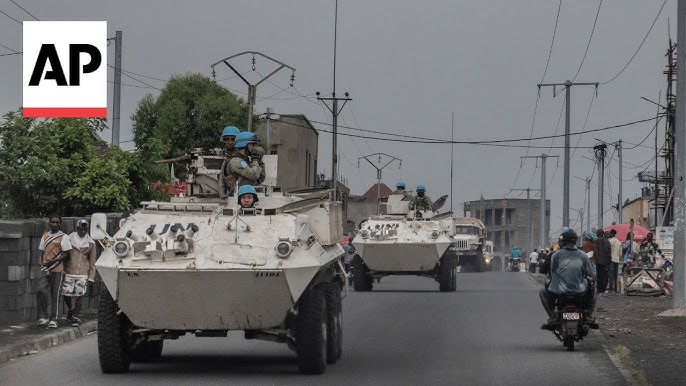- The fall of eastern Congo’s biggest city has sent thousands from their homes and – once again – left the Great Lakes on the edge of a wider war. African mediators with the concerted backing of external partners should move with speed to prevent more fighting
On the morning of 27 January, Rwandan-backed March 23 (M23) rebels swept into Goma, capital of the eastern Democratic Republic of Congo’s North Kivu province, seizing control of the city of one million. The development marks a dramatic escalation in the long-running crisis. The fighting has uprooted over two million from their homes, exposing thousands around Goma to predation by various militias. Rwanda and the M23 now control practically all of North Kivu province and by force of arms have forged a new reality in the region. Worse could well be on the way. Rebels are pushing deeper into the neighbouring South Kivu province and menacing its capital Bukavu, suggesting they have ambitions beyond Goma or at least are seeking to ramp up the pressure on a weakened Kinshasa. Left unchecked, the fighting could spread throughout the Great Lakes region, recalling the horrors of the late 1990s and early 2000s, when millions died amid a multi-country war in the Congo.
Regional and international diplomacy has failed to meet the moment, even as concerted efforts to halt the fighting have never been more urgent. Right now, the most promising forum are talks convened by Kenyan President William Ruto, the current chair of the East African Community, which begin 29 January. All interested parties – including leaders from the DRC, Rwanda and Angola (which has run its own mediation track at the request of the African Union) should be at the table for this and future rounds. These negotiations will need to focus on short-term measures to stabilise Goma and prevent fresh urban combat which would devastate the city’s traumatised population. Regional diplomats should work with the UN to create humanitarian corridors to supply thousands stranded in and around the city, and seek a caretaker arrangement for Goma, rather than leave Rwanda or the M23 in control while talks continue. Influential external actors, notably the EU and U.S., should throw their weight behind this effort while warning Kigali against advances deeper into its neighbour’s territory.
Antagonism Grows as Mediation Falters
Mostly dormant since their last major incursion into the region in 2012, the M23 suddenly resurged in November 2021 when it attacked Congolese troops. They pushed deep into North Kivu province, repeatedly routing Congo’s ill-equipped and unmotivated soldiers, as well as the motley group of auxiliaries fighting by their side, taking towns and valuable mining sites. The fighting has since pulled in an array of mercenaries, militia and regional powers. The rebels – supported from the beginning by Rwandan arms, troops and logistics – are the latest configuration of Tutsi-dominated insurgents formed in the civil war of the 1990s.
Faced with the growing threat, Kinshasa recruited mercenaries, reportedly from Romania with officers from France, to operate new military hardware, and pulled in troops first from East Africa and then from southern African countries. Neighbouring Burundi, which fielded around 2.000 troops defending Goma, has been one of Kinshasa’s staunchest allies and sent forces in on a bilateral basis in addition to its complement fielded under the southern African deployment. The 12,000-strong UN peacekeeping mission MONUSCO is based in Goma and took part in a few battles against the advancing rebels but avoided major confrontations. In addition, the Congolese military authorities in Goma recruited a collection of militias known as the Wazalendo (or patriots in Swahili). A major feature of the fighting has been the repeated displacement of villagers caught in the crossfire. Women and girls have particularly suffered from predatory acts by armed men on all sides, especially in displacement camps where reports of sexual and gender based violence soared.
Rwanda initially denied any role, claiming the crisis was a purely Congolese affair. But evidence has since piled up of their troops’ activities in North Kivu.
Rwanda initially denied any role, claiming the crisis was a purely Congolese affair. But evidence has since piled up of their troops’ activities in North Kivu; over 4,000 Rwandan personnel are now in the vicinity, according to the UN and Crisis Group sources. In 2024, Kigali increasingly sought to frame its actions as protection of Congolese Tutsis and defensive measures against threats from the Democratic Liberation Front of Rwanda (FDLR in French), an anti-Kigali group made up of remnants of the forces which committed the 1994 genocide. Kigali also says its actions are a response to the DRC’s hostile military posture and increasingly shrill anti-Kigali rhetoric.
Kigali’s narrative justifying its intervention, however, does not square with events on the ground. There, the goal appears less to root out the FDLR than long-term territorial expansion including grabbing mineral-rich regions. The M23 and Rwandan troops have remade areas under their de facto control by embedding their own administrations and pushing out local civilian leaders who oppose them. Absent a diplomatic settlement or the remote possibility of a military pushback, they will be in the Kivus for some time to come.
The Fall of Goma
Fighting ramped up following the collapse of the latest round of talks aimed at tamping down the crisis. In 2022, the African Union invited Angola’s President João Lourenço to mediate the conflict. Luanda energetically took up the mission, convening multiple rounds of engagements, including direct talks between Rwandan President Paul Kagame and DRC President Félix Tshisekedi. In July 2024 parties agreed to a ceasefire, although that quickly broke down. Talks in December 2024 – which were expected to be the culmination of negotiations – collapsed amid mutual recriminations. The main point of contention was a demand from Kigali that Kinshasa negotiate directly with the M23, a call the DRC flatly rejected, seeing the rebels as a Rwandan stooge.
Events on the battlefield then proceeded with head-spinning speed. The M23 – alongside the Rwandan military, perhaps the most disciplined and effective fighting force in the region – resumed its advances in December 2024. It seized territory with a swiftness that left Kinshasa and its allies struggling to respond. On 4 January, the M23 took Masisi, the centre of the province’s lucrative gold and coltan mining industry. Next, they seized Minova, a Lake Kivu port town on the road linking Goma and Bukavu, thus cutting off the army’s ability to receive supplies from Bukavu via Lake Kivu.
Despite all these Congolese military setbacks, the attack on Goma still took many residents by surprise. In the past, the M23 has used rapid advances to secure concessions before pulling back, as it did when the East African regional bloc deployed its troop mission in August 2022. But it soon became clear they were determined to press on this time. The reasons for the timing of the all-out assault remain a mystery but appear linked to their realisation they faced only limited resistance and were pushing against an open door. On 23 January, the M23 shelled Sake, a key town a mere 25 kilometres from Goma that controlled a major supply route into the city. The Congolese provincial military governor General Peter Cirimwami was killed in the fighting near Sake on 24 January, possibly by Rwandan special forces or the M23, though the Rwandans have denied this.
Having gained control of Sake on 23 January, the M23 and Rwandan special forces advanced on Goma the next day.
Having gained control of Sake on 23 January, the M23 and Rwandan special forces advanced on Goma the next day, using long-range artillery to successfully sow panic in the ranks of the Congolese army and its auxiliaries. During the weekend of 25 and 26 January, Congolese troops and pro-Kinshasa militia flowed back into the city as fighting engulfed the outskirts. While soldiers from the national army, Southern African regional force and UN tried to hold the lines, including around the airport, they were rapidly overwhelmed and encircled. Over the course of 27 January, M23 columns were increasingly visible, and uncontested, in the centre of the city while international forces kept a low profile or evacuated their bases. On the morning of 28 January, some locals reported pockets of fighting, although some gunshots are likely linked to pillage rather than organised resistance to the M23, with the exception of the airport which was still contested ground. Most worrying are reports that Congolese troops have landed shells on the Rwandan side of the border, reportedly leading to some deaths.
The weekend’s events have badly exposed the disorganisation of Congolese forces and their allies, which were already suffering from poor or non-existent coordination between the multiple forces present. As they retreated into the city, troops and pro-Kinshasa militia looted civilians. Highly paid mercenaries, there to operate high-tech military drones that had long been effectively grounded by Rwandan air defence, simply disappeared from view. While many will rightly be relieved that the fighting was so limited, Tshisekedi may be wondering how the city fell with such ease.
Risks of a Wider War
The risk is real that the situation could escalate into a regional conflagration if talks are not successful. Kigali’s desire to use its superior force to push negotiation positions in its favour is particularly worrying. On the other side, it is unclear how Tshisekedi will respond to the humiliating turn of events. While he is surely tempted to bring in reinforcements, including greater numbers of Burundian troops, there is little prospect they could turn the tide. The disarray at the heart of the government in Kinshasa is a further critical factor. Tshisekedi faces a stark political challenge, with his army having fled the largest city in the east of the country, headquarters of one of the world’s largest UN peacekeeping missions. In short, either side could calculate that more fighting is the best, or the only politically acceptable, option. The consequences for civilians from such a wider war would be forbidding. The last such bout of fighting in the late 1990s left millions dead, primarily due to malnutrition and disease.
The war could easily spread beyond the Kivus. Unlike during the last M23 campaign in 2012 and 2013 – when the group was primarily a North Kivu Tutsi force pushing for the integration of its fighters into the Congolese army – this time it has a national agenda. In December 2023, Corneille Nangaa, a former electoral commission chief and close associate of former DRC President Joseph Kabila, announced the formation of the Congo River Alliance (AFC by its French acronym), a coalition of rebels seeking regime change in Kinshasa. While the AFC remains largely a political umbrella for the M23, the rebels have now accumulated resources and allies, making them attractive partners not only to armed groups in eastern DRC but to others aiming to undermine Tshisekedi. This is in line with Kigali’s probable strategy of creating a deniable but powerful Congolese front to exact the maximum leverage over Kinshasa and confirm its dominance of North Kivu, at a minimum
On the regional front, the potential for further fighting has never been higher.
On the regional front, the potential for further fighting has never been higher. Clashes pitting the Rwandan army and M23 against Burundian soldiers have already left dozens dead in North Kivu. In addition, Burundi has strong strategic interest in neighbouring South Kivu, including containing the threat posed by Burundian rebels who use the area as a rear base. Any advance by the M23 rebels into the region would pull Gitega in further. The bad blood festers in part for ethnic reasons, as the Burundi government has, at least in the past, collaborated with the FDLR, which has an avowed hatred of Tutsis, while Gitega suspects Kigali of funding mainly Tutsi opponents of the Burundian government. On 25 December 2024, Rwanda’s foreign minister accused Burundi of collaborating with “genocidal forces” in the eastern DRC. Some regional diplomats have told Crisis Group there is a real risk that Kigali expands its ambitions to toppling the Hutu-dominated government in Gitega.
All this comes at a particularly delicate time for the DRC. In the course of last year, President Tshisekedi launched a review of the country’s constitution. His political opponents and civil society, including the influential Catholic Church, suspect him of seeking to remove the limits on his own time in office, which would normally block him from serving past 2028, and are mobilising to resist his move. As battle lines harden, his opponents will wield his failures in North Kivu as a political cudgel, while he will likely continue to play the nationalist card and accuse his opponents, as he has before, of being in Rwanda’s pocket.
Rwanda’s wider ambitions are hard to read, but assessing their true goals may be crucial for the success of any talks. Behind its rhetoric of self-defence and its participation in African-led mediation, Kigali is determined to secure full influence over North Kivu, capturing its mineral resources and tamping down on any armed resistance. Rwanda is aware that it has by far the most effective army in the region and now wants to create favourable facts on the ground. In recent months, Kigali has moved from a communication strategy of denial to justification, with key political and military figure James Kabarebe in October 2024 asserting the Kivus were historic Rwandan lands “unjustly” taken from Rwandan hands by European colonial powers. Its underlying terms will likely centre around ways it can control the province through proxies, by promoting M23 allies to important posts in the provincial leadership and the army. If Tshisekedi continues to hold out against negotiation on these terms, it seems likely that the M23 may expand the territory it controls, with South Kivu’s capital Bukavu its next major target.
Finding a Way to Calm the Waters
East African leaders are planning a presidential summit for 29 January to try to address the crisis. On 27 January, Kenyan President Ruto announced that both Kagame and Tshisekedi had agreed to attend the talks. As they gather, mediators will have to consider a set of both short- and medium-term priorities. The most immediate issue is to stabilise Goma and prevent any bloodletting in the city. Kinshasa needs to accept that the next steps should be decided around the negotiating table rather than through yet more combat. Given that Kigali’s proxies are now in almost complete control, Kinshasa should refrain from launching a counter-offensive, which would trap thousands of civilians in the crossfire with little prospect of ousting the M23. They should instead give talks a chance to chart a way forward.
The plight of an ever-growing number of desperate displaced people, mainly vulnerable women and children, in camps around Goma should rank high on the agenda. The leaders should press Kigali to commit to creating corridors for the supply of humanitarian assistance. The UN is well placed to lead the effort to reach those in greatest need. It should also keep roads open to supply badly needed food into the markets in the city.
The question of long-term control of North Kivu is a thorny and difficult one. In essence, Kigali wants to have its way in the North Kivu region which abuts its borders – and for Tshisekedi to accept his defeat, which would be a bitter pill to swallow. Nor should regional leaders welcome a result that rewards Rwandan aggression by allowing it to engineer the DRC’s fragmentation, which would create a terrible precedent and clearly violate the African Union’s charter which calls for respect of national borders inherited at independence. But given Rwanda’s formidable military hand, their options are going to be limited.
One possible approach would be for the East African leaders to propose a middle ground, which would see the M23 pulling back from Goma and allowing an alternative African force, possibly mandated from the East African Community, to take administrative control of the city while talks continue. Such a force would need an invitation from Kinshasa but also a green light from Kigali. There is a precedent. In August 2022, a Kenya-led East African force managed to persuade the M23 to pull back hundreds of kilometres from territory it had seized on the proviso that the East Africans, not the Congolese army, would take control of that land. This compromise would still be hard for Kinshasa to stomach but would be preferable to M23 control of Goma and might buy some time for diplomacy to create other options.
Western and regional diplomats … must continue to press Kigali to rethink and abandon its bellicose positioning.
While some Western and regional diplomats have some sympathy for Kigali’s interests in North Kivu given its historical and cultural links, they must continue to press Kigali to rethink and abandon its bellicose positioning, which is highly destabilising. They should unite in sending a clear and unequivocal message to Kigali that attempting to expand its war first into Bukavu and potentially elsewhere will draw consequences, including further individual sanctions and travel bans for Rwandan leaders, and a reduction or withdrawal of financial aid to the government and army. The U.S., European Union and Britain – which all have strong diplomatic ties with Kigali and key African states, the latter likely behind closed doors given their aversion to criticise fellow member states – should concertedly send this message across.
For his part, President Ruto, who is leading the East African de-escalation talks, should invite President Lourenço of Angola, whose team has worked tirelessly on the file and who is also the incoming chair of the African Union’s assembly of heads of state, to join this and future rounds to avoid the possibility Kigali will attempt to forum-shop.
Finally, contending with a bracing defeat, Tshisekedi will need to show more flexibility. His consistent stance rejecting all prospect of talks with the M23 now appears untenable given developments on the ground. The escalatory risks of continued conflict in the Kivus and beyond is grave indeed. He would be well advised to soften this position and accept talks going forward. These should be marshalled by whichever configuration of African leaders the parties are comfortable with, and come to an agreement on a roadmap for calming the perennial fighting in a region scarred for too long by repeated bouts of damaging violence.
@ICG (International Crisis Group)





